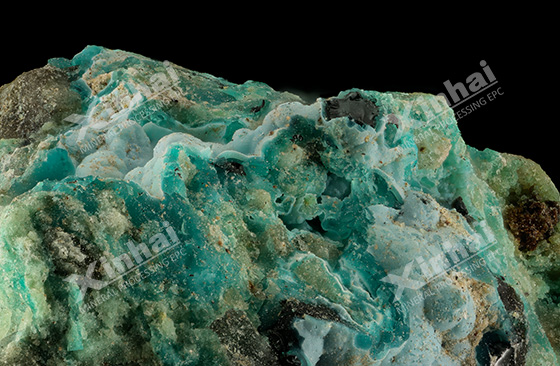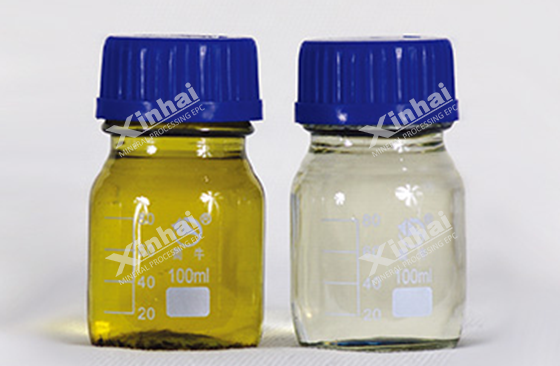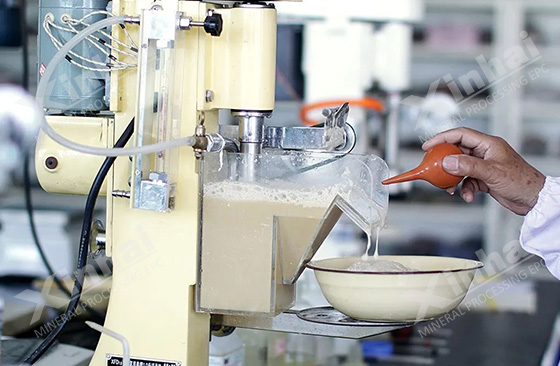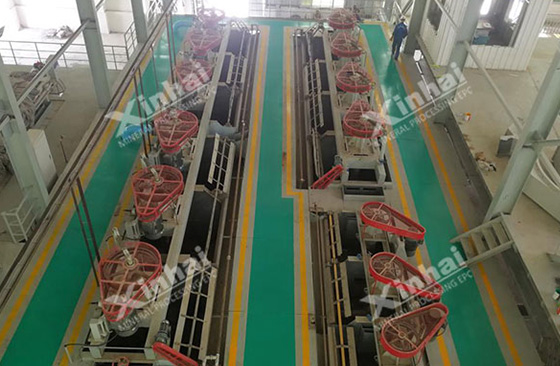
Flotation is the main method for recovering copper oxide ores, which can be mainly sulfide flotation, direct flotation with fatty acid collectors, and flotation with amine collectors. Among them, direct flotation with fatty acid collectors is often used to treat oxidized copper minerals such as malachite with simple ore structure and high ore grade. Amine collector flotation is mainly used to treat copper oxide ores containing oxidized lead and zinc ores, while sulfide flotation is more widely used than the former two. Sulfide flotation has good selectivity and is often used to float oxidized copper minerals. The following will introduce several issues that need to be paid attention to during sulfide flotation to help you better understand copper oxide mineral processing process.
Sulfide flotation can effectively recover minerals such as malachite and azurite or copper oxide ores. According to process mineralogy research, the industrial copper oxide minerals that can be recovered by sulfide flotation include: malachite, azurite, cuprite, hydrochloasite, chloasite, copper chloroasite, native copper, etc.

The sulfide flotation method of copper oxide ores often uses sodium sulfide, sodium hydrosulfide, elemental sulfur and other agents as sulfiding agents, among which sodium sulfide is a commonly used sulfiding agent. The amount of sodium sulfide used in the sulfide flotation process is an important factor in controlling the flotation index. When the amount is appropriate, the flotation of copper oxide is smooth, while when the amount of sodium sulfide is too large, the adsorption amount of the collector on the surface of the copper oxide mineral is reduced, which hinders the flotation of copper oxide. When copper sulfide is used to float copper oxide, a segmented dosing method is required. The most suitable number of addition stages is determined by the shedding rate of the copper sulfide covering film generated on the surface of copper oxide and the floating rate after the reaction of the mineral and the collector.

When sulfide flotation of copper oxide ores, it is necessary to add an appropriate amount of activator to improve the flotation index of copper oxide ore. Commonly used flotation activators include ethylenediamine phosphate and DMTDA. Ethylenediamine phosphate is one of the most commonly used activators for flotation of copper oxide ores. It is widely used in actual production. When ethylenediamine phosphate activates difficult-to-select copper oxide ore, it controls the flotation properties of copper oxide ore by slightly dissolving copper oxide ore. When the pH value of the solution is about 10, the flotation index of copper oxide ore is the highest.
In order to obtain better flotation index of copper oxide sulfide, improving the effect of collectors is an effective way. The application of new collectors and mixed drugs is a commonly used flotation collector. Among them, hydroxamate can generate precipitation with metal ions at their own specific pH value and different conditions, so it is an effective collector for sulfide flotation of copper oxide ores.

A large amount of ore slime will be produced during the flotation of copper oxide ores. These ore slimes will be adsorbed on the gas/liquid interface and then have an adverse effect on the flotation of copper oxide ore and even make flotation difficult. A large number of studies have shown that ore slime will affect the flotation recovery rate of malachite, which is mainly affected by the properties of the ore slime. Different types of ore slime have different effects on it, and the effects gradually increase in the following order: kaolin, bentonite, quartz and goethite, etc.
In order to eliminate the adverse effects of sludge on the sulfide flotation of copper oxide minerals, the following measures can be taken:
1. Fully wash the sulfide flotation feed
2. Add polymer flocculants to the flotation slurry to flocculate the sludge particles, and then use appropriate frothers to flot the flocculants
3. Disperse the sludge by adding dispersants

The process of the mineral is mainly determined by the properties of copper oxide ores. When flotating copper oxide minerals, the concentrates of each operation in the process should be returned to the previous flotation operation in time according to the shedding speed of the sulfide covering film generated on the surface of the mineral, and the principle of early selection and early collection should be followed. Add appropriate amounts of sulfiding agents, collectors and other reagents in the selection operation to improve the recovery rate of the concentrate in the selection operation.

The above is a brief description of the key issues of sulfide flotation of copper oxide ores. In actual production, there are still many difficulties in sulfide flotation. Therefore, the sulfide flotation process of copper oxide minerals needs to be selected according to the properties of the ore. Selecting new and suitable reagents and formulating reasonable process flows can improve the flotation index of copper oxide ores.
To find out more about our products and solutions, please fill out the form below and one of our experts will get back to you shortly.